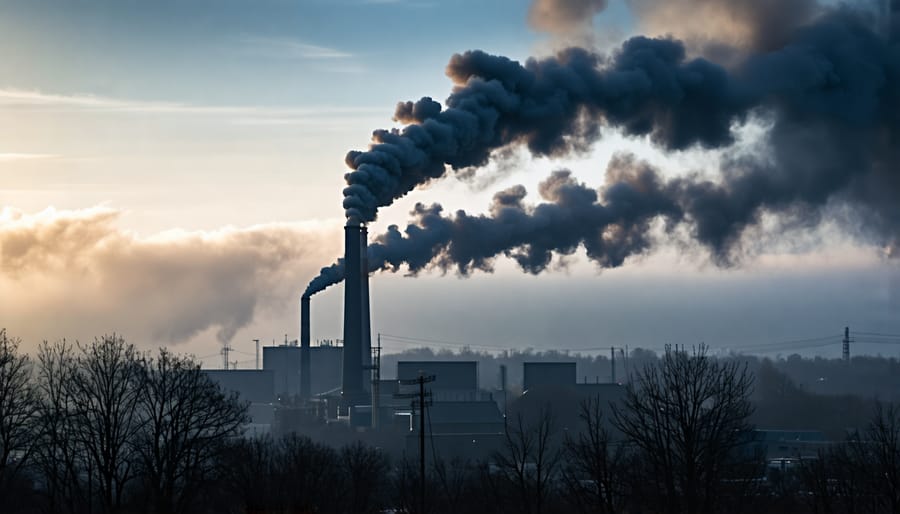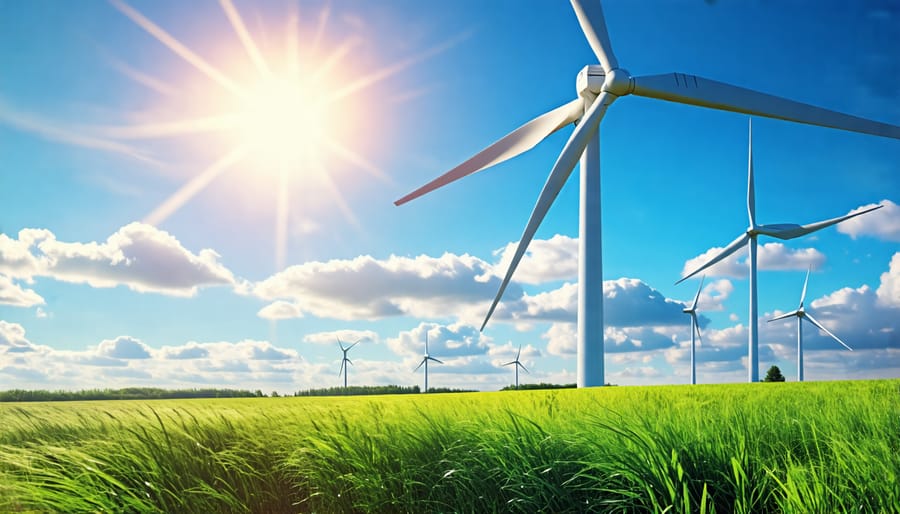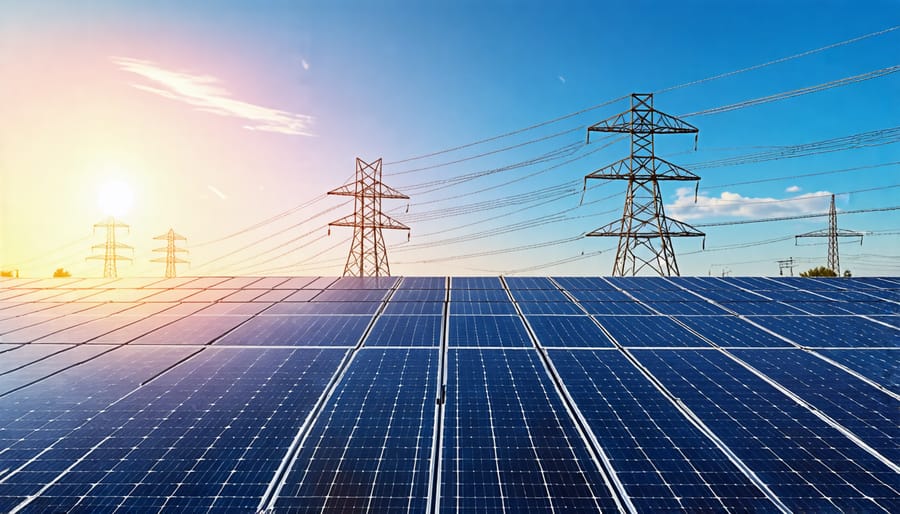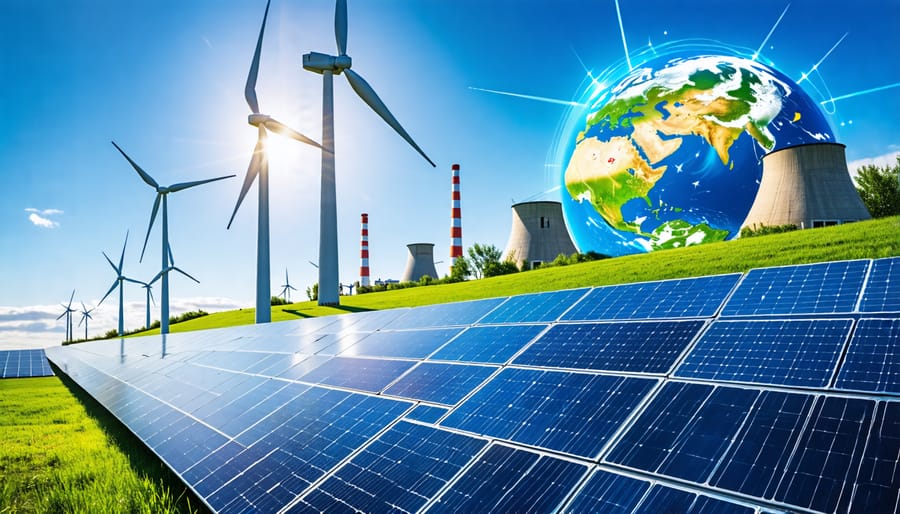Climate change poses an existential threat to our planet, fueled by the rampant burning of fossil fuels and emission of greenhouse gases. However, the rapid advancement and adoption of low-carbon energy sources offer a glimmer of hope in the fight against global warming. From solar and wind power to nuclear energy and green hydrogen, these clean technologies have the potential to dramatically reduce our carbon footprint and slow the pace of climate change. But the transition to a low-carbon future is not without challenges – it requires significant investment, policy support, and a fundamental shift in how we produce and consume energy. In this article, we will explore the impact of low-carbon energy on climate change, examining both the promising solutions on the horizon and the obstacles we must overcome to achieve a sustainable future for our planet.
The Impact of Fossil Fuels on Climate Change

Greenhouse Gas Emissions
The burning of fossil fuels like coal, oil, and natural gas releases significant amounts of carbon dioxide (CO2) and other greenhouse gases into the atmosphere. As these gases accumulate, they trap heat from the sun, causing the Earth’s temperature to rise. Dr. James Hansen, a renowned climate scientist, explains, “The greenhouse effect is well understood. It is as real as gravity.” This phenomenon, known as the greenhouse effect, is the primary driver of climate change. Other greenhouse gases, such as methane and nitrous oxide, also contribute to this warming effect. According to the Intergovernmental Panel on Climate Change (IPCC), human activities have caused approximately 1.0°C of global warming above pre-industrial levels, with CO2 from fossil fuel combustion being the main culprit. Reducing these emissions is crucial to mitigating the impacts of climate change and preserving our planet for future generations.
Climate Consequences
Fossil fuel-driven climate change is already having far-reaching consequences on our planet. As global temperatures rise, sea levels are climbing due to melting ice caps and thermal expansion of oceans, threatening coastal communities and infrastructure. More frequent and intense extreme weather events, such as hurricanes, floods, and droughts, are devastating ecosystems and human settlements alike. Climate change is also disrupting delicate ecological balances, causing shifts in species’ habitats and migration patterns, and increasing the risk of extinction for many plants and animals. Ocean acidification, caused by increased absorption of atmospheric carbon dioxide, poses grave dangers to marine life and coral reefs. The impacts of climate change are not just environmental; they also have profound social and economic implications, disproportionately affecting vulnerable populations and exacerbating existing inequalities. Urgent action is needed to transition away from fossil fuels and embrace low-carbon energy solutions to mitigate these devastating consequences.
The Promise of Low-Carbon Energy

Solar and Wind Power
Advancements in solar power and wind energy are rapidly transforming the energy landscape. The cost of solar panels has plummeted by over 90% since 2010, making solar one of the cheapest energy sources available. Similarly, wind turbine technology has seen significant improvements in efficiency and cost-effectiveness. As a result, these renewable energy sources are being deployed at an unprecedented scale worldwide.
In 2020, solar and wind accounted for nearly 10% of global electricity generation, a figure that is expected to rise to 30% by 2030. This surge in clean energy adoption is crucial for decarbonizing the power grid and mitigating climate change. By displacing fossil fuels, solar and wind power are reducing greenhouse gas emissions and helping to limit global temperature rise. As the world continues to embrace these technologies, they will play an increasingly vital role in the fight against climate change.
Nuclear Energy
Nuclear energy has the potential to play a significant role in reducing carbon emissions and mitigating climate change. As a low-carbon energy source, nuclear power plants generate electricity without emitting greenhouse gases during operation. New, safer reactor designs, such as small modular reactors (SMRs) and advanced nuclear technologies, are being developed to address safety concerns and improve efficiency. These innovations aim to make nuclear power more accessible, cost-effective, and adaptable to various energy needs. By incorporating nuclear energy into the mix of low-carbon energy solutions, countries can work towards achieving their climate goals and reducing their reliance on fossil fuels.
Energy Storage and Grid Integration
Energy storage technologies, such as batteries and pumped hydro storage, are crucial for integrating high levels of renewable energy into the grid. These solutions help balance supply and demand by storing excess energy during periods of high production and releasing it when needed. Smart grid technologies, including advanced sensors, control systems, and data analytics, enable efficient management of the grid with a mix of renewable and conventional sources.
By optimizing energy distribution and consumption, smart grids can reduce reliance on fossil fuel-based backup power plants. Energy storage and smart grid technologies work together to create a more resilient, flexible, and sustainable energy system. As renewable energy adoption grows, investment in these supporting technologies will be essential for ensuring reliable, low-carbon electricity supply and mitigating the impacts of climate change.

Carbon Capture and Storage
Carbon capture and storage (CCS) is an emerging technology that complements the transition to low-carbon energy sources. CCS involves capturing CO2 emissions from power plants or industrial facilities, transporting it, and storing it underground in geological formations. By preventing the release of CO2 into the atmosphere, CCS can significantly reduce the climate impact of fossil fuels while cleaner energy solutions are developed and implemented. Although CCS is still in its early stages, it has the potential to play a crucial role in mitigating climate change, particularly in sectors where low-carbon alternatives are not yet viable. Research continues to improve the efficiency and cost-effectiveness of carbon capture and storage technologies.
Overcoming Barriers to Low-Carbon Transition
Economic and Policy Hurdles
Transitioning to a low-carbon energy future requires overcoming significant economic and policy hurdles. Governments need to implement conducive policies that incentivize the adoption of clean energy technologies while discouraging the use of fossil fuels. Carbon pricing mechanisms, such as carbon taxes or cap-and-trade systems, can help level the playing field by making polluters pay for their emissions. These policies send a clear signal to the market, driving investment and innovation in low-carbon solutions.
However, the sunk costs of existing fossil fuel infrastructure pose a major challenge. Power plants, pipelines, and refineries represent billions of dollars in investments that are difficult to abandon. Governments and companies must find ways to manage these stranded assets and ensure a just transition for workers and communities dependent on the fossil fuel industry. This may involve gradually phasing out fossil fuels, repurposing infrastructure for clean energy, and providing support for retraining and job creation in green sectors.
Overcoming these hurdles requires bold leadership, international cooperation, and public support. By putting the right policies in place and investing in the transition, we can unlock the full potential of low-carbon energy to combat climate change while creating a more sustainable and prosperous future.
Technological Limitations
While low-carbon energy technologies hold immense promise for mitigating climate change, it’s important to acknowledge their current limitations. Many renewable energy sources, such as solar and wind power, are intermittent and require efficient storage solutions to ensure a steady supply of electricity. Battery technology has made significant strides in recent years, but further advancements are needed to improve energy density, longevity, and cost-effectiveness.
Nuclear power, despite its low carbon footprint, faces challenges related to public perception, safety concerns, and waste management. Ongoing research aims to develop safer and more efficient reactor designs, such as small modular reactors and thorium-based systems.
Carbon capture and storage (CCS) technology, which can significantly reduce emissions from fossil fuel power plants, is still in its early stages of deployment. Scaling up CCS infrastructure and reducing its costs are crucial for widespread adoption.
Hydrogen fuel cells offer a clean alternative for transportation and energy storage, but the production of green hydrogen from renewable sources needs to become more cost-competitive. Researchers are exploring new catalysts and production methods to improve efficiency and reduce costs.
Overcoming these technological limitations requires sustained investment in research and development, as well as collaborative efforts between governments, industry, and academia. By addressing these challenges head-on, we can accelerate the transition to a low-carbon future and effectively combat climate change.
Conclusion
The transition to low-carbon energy sources is crucial in our fight against climate change. As the evidence of the devastating impacts of climate change becomes increasingly apparent, it is clear that we must take urgent action to reduce our greenhouse gas emissions. Low-carbon energy solutions, such as solar, wind, hydro, and nuclear power, offer a promising path forward, providing clean electricity without the carbon emissions associated with fossil fuels.
However, the adoption of low-carbon energy is not without challenges. Overcoming technological, economic, and political barriers will require significant investment, innovation, and international cooperation. Governments, businesses, and individuals must work together to accelerate the deployment of low-carbon energy technologies, improve energy efficiency, and promote sustainable practices across all sectors of society.
The stakes could not be higher. Climate change threatens the very foundations of our global ecosystem, with far-reaching consequences for human health, food security, biodiversity, and economic stability. By embracing low-carbon energy and taking bold action to reduce our carbon footprint, we have the opportunity to create a more sustainable, resilient, and prosperous future for generations to come. The time to act is now, and the path forward is clear – a rapid transition to clean, low-carbon energy is essential to securing a livable planet for all.

